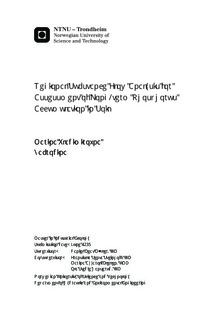| dc.contributor.advisor | Müller, Daniel Beat | nb_NO |
| dc.contributor.advisor | Steinhoff, Fransiska Senta | nb_NO |
| dc.contributor.advisor | Bleken, Marina Azzaroli | nb_NO |
| dc.contributor.advisor | Hanserud, Ola Stedje | nb_NO |
| dc.contributor.author | Zabrodina, Marina Vladimirovna | nb_NO |
| dc.date.accessioned | 2014-12-19T11:50:54Z | |
| dc.date.available | 2014-12-19T11:50:54Z | |
| dc.date.created | 2013-09-19 | nb_NO |
| dc.date.issued | 2013 | nb_NO |
| dc.identifier | 649703 | nb_NO |
| dc.identifier | ntnudaim:9463 | nb_NO |
| dc.identifier.uri | http://hdl.handle.net/11250/235202 | |
| dc.description.abstract | Phosphorus is a non-renewable resource that is essential for food production. At the same time, phosphorus may cause environmental problems because excess phosphorus in agricultural soil often leads to eutrophication. For rational and sound phosphorus management in order to mitigate resource scarcity and eutrophication problems, reliable estimates of phosphorus pools and flows and the understanding of phosphorus soil dynamics are needed. Studies in Material Flow Analysis that consider soil phosphorus stocks are few and do not allow a reliable insight in soil phosphorus pools and their contribution to plant production as they mainly analyze global and national phosphorus flows. This study aimed to assess long-term soil phosphorus accumulation in Norway by analyzing the regional phosphorus flows. Three Norwegian regions with contrasting agricultural production systems were chosen: Akershus with dominating cereal production, Rogaland with high livestock density and Sør-Trøndelag with mixed agriculture. Phosphorus flows and soil budget were quantified on a yearly basis from 1950 to 2011 and compared with estimates of available soil phosphorus based on the ammonium lactate soil phosphorus test. It was shown that the results of soil phosphorus test did not reflect soil phosphorus accumulation over years; this may indicate the accumulation of a large part of phosphorus in the unavailable pool. Comparison of the three-year average for 1997-1999 and 2009-2011 across the three regions showed the influence of agricultural production system on phosphorus flows and budget. The crop producing region Akershus was found highly dependent on mineral fertilizer import, while the region with high livestock density Rogaland accumulated large amount of phosphorus in manure but depended on input of feed concentrates. The phosphorus soil budget was found positive in all three regions over the entire time period. In the mainly crop producing region Akershus the phosphorus soil budget was decreasing since 1970s while it is increasing in the animal producing region Rogaland since 1990s. High dependence on the inputs of mineral fertilizer and feed concentrates and simultaneous phosphorus accumulation in soil create an unbalanced situation with respect to phosphorus. From the system perspective, the recycling of phosphorus from the areas with high livestock density to crop-producing areas is necessary in order to achieve a better degree of sustainability. | nb_NO |
| dc.language | eng | nb_NO |
| dc.publisher | Institutt for vann- og miljøteknikk | nb_NO |
| dc.title | Regional Substance Flow Analysis for Assessment of Long-term Phosphorus Accumulation in Soil | nb_NO |
| dc.type | Master thesis | nb_NO |
| dc.source.pagenumber | 72 | nb_NO |
| dc.contributor.department | Norges teknisk-naturvitenskapelige universitet, Fakultet for ingeniørvitenskap og teknologi, Institutt for energi- og prosessteknikk | nb_NO |

